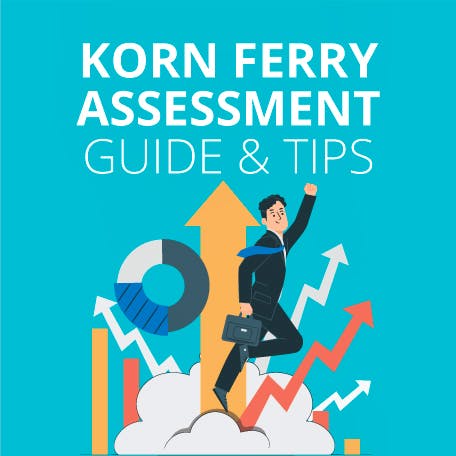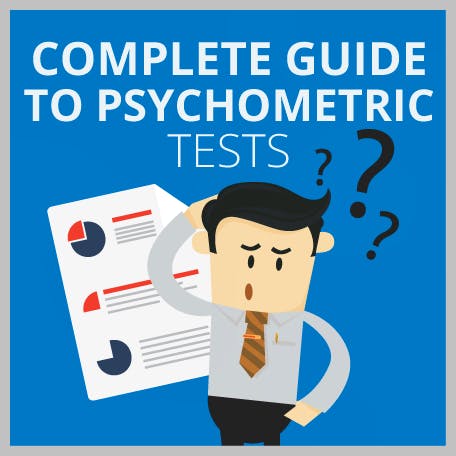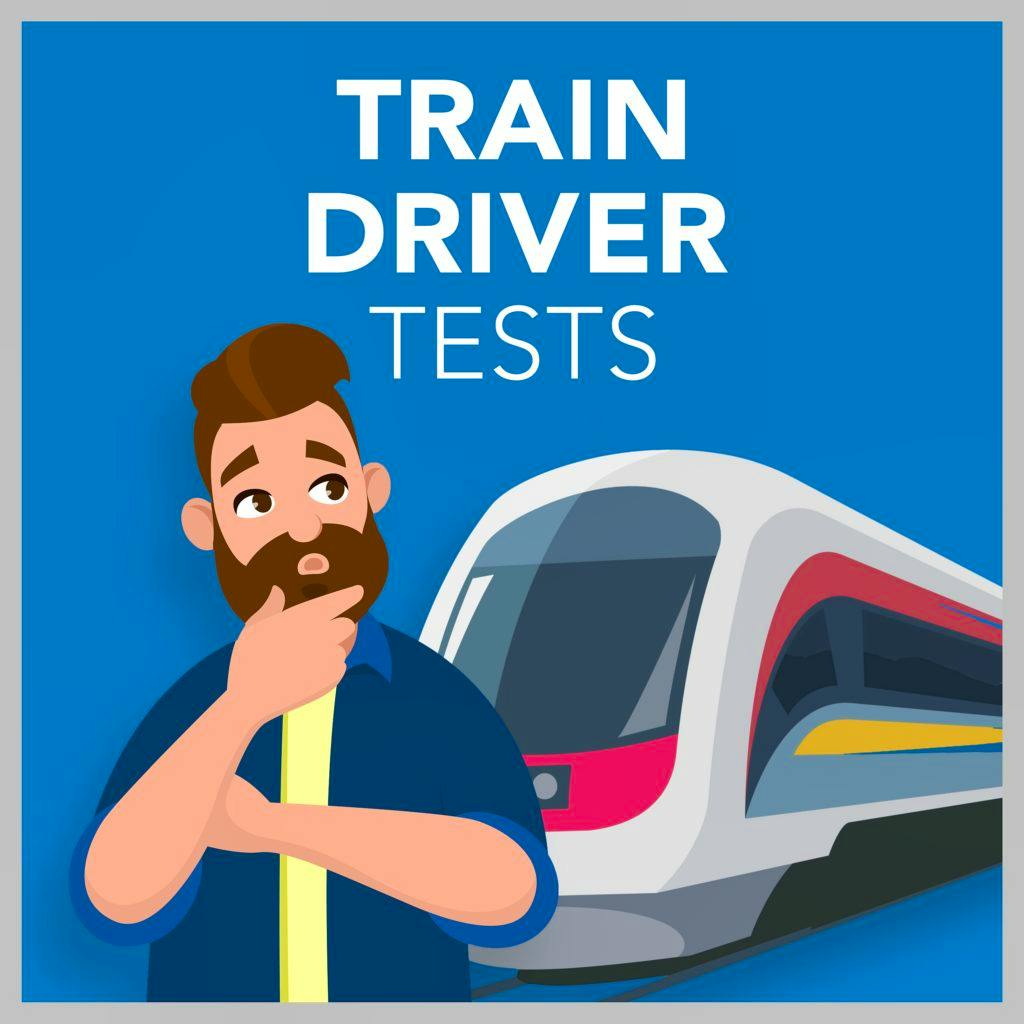How to Pass the Korn Ferry Leadership Potential Assessment (KFALP) in 2026
Updated November 18, 2023
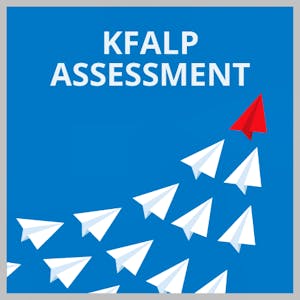
- What Is the Korn Ferry Assessment?
empty
empty
- The Korn Ferry Leadership Assessment (KFALP) & Competencies
empty
empty
empty
empty
empty
empty
empty
- Who Uses the Korn Ferry Leadership Potential Assessment (KFALP)?
- Korn Ferry Leadership Assessment Examples
- How Is the Korn Ferry Executive Assessment Scored?
- How to Pass the KFALP Test?
- Frequently Asked Questions
- Final Thoughts

The Korn Ferry Leadership Potential Assessment (KFALP) is used to test candidates to see if they have the potential to become leaders and managers.
It uses seven different categories, known as Seven Signposts, to assess potential leaders:
- Drivers
- Experience
- Awareness
- Learning Agility
- Leadership Traits
- Capacity
- Derailment Risks
This article will examine the theory behind the assessment, the different topics that are tested and how the assessment is scored.
There will also be example questions so that you know what to expect when you take the KFALP and some tips to help you score as highly as possible when you take the test.
What Is the Korn Ferry Assessment?
Korn Ferry is a management consulting firm that has been providing services to businesses since 1969.
Widely known as the assessment partner of choice to most Fortune 100 companies, especially in the finance sector, the Korn Ferry psychometric tests are based on organizational psychology and widely regarded as excellent predictors of future success in varied roles.
There are several tests produced by Korn Ferry, and they can be categorized into two distinct groups:
Aptitude
The aptitude tests that Korn Ferry produces include:
- Korn Ferry Numerical test – Read, understand and analyze numerical data, usually in the form of statistics and tables
- Korn Ferry Verbal test – Read, understand and analyze written data in the form of business-related passages of text
- Korn Ferry Logical test – Spotting patterns and trends in shapes to logically predict the next in a sequence
- Korn Ferry Error checking test – Quickly and accurately comparing two seemingly identical data sets
- Korn Ferry E-tray test – Multitasking and working with stated priorities
Personality
The Korn Ferry personality tests are usually untimed and they require self-knowledge to complete.
- TalentQ Dimensions – A personality inventory test that asks candidates to decide how much a statement is like their behavior at work
- KFALP – An assessment specifically to test for leadership potential based on situational judgment questions
There is also the Korn Ferry Dimensions Test, also known as the Talent Q Dimensions Test.
The Korn Ferry Leadership Assessment (KFALP) & Competencies
The KFALP is an assessment that is firmly focused on the idea of future potential, regardless of the position that the candidate is in currently.
The KFALP is based on four dimensions of leadership talent, which are:
- Competencies – Observable behaviors and skills
- Experiences – Knowledge gained from previous roles
- Traits – Natural behaviors and traits as well as intellect
- Drivers – The influence on potential through interests and values
Related to these broad categories, the questions in the KFALP are designed to test certain facets of a great leader. These are known by Korn Ferry as the Seven Signposts and are the heart of the assessment.
Drivers
A driven leader has a ‘will do’ attitude. They find energy in getting things done and have the enthusiasm to achieve. They are resilient and have higher career aspirations.
The Drivers signpost has three subdimensions:
- Advancement Drive – What drives a candidate to advance, their core motivations
- Career Planning – Specific career goals and their career focus
- Role Preferences – Does the candidate prefer a role with depth or a role with breadth?
Experience
The experience that a potential leader has in different roles will add dimensions of knowledge that they can put into leading.
Experiences are defined by challenges that have been overcome and the ways that the candidate has dealt with problems – and these key challenges are an important part of this signpost.
If a candidate is lacking in experience and has not dealt with enough of the key challenges, there will be more need for learning on the job and, therefore, more pressure.
The Experiences signpost has three subdimensions:
- Core Experiences – This is defined by Korn Ferry as the number of leadership roles that the candidate has held for more than two years
- Perspective – A potential leader gains perspective by holding leadership roles in different organizations, industries and even countries, with the ability to use that perspective to solve problems from a different perspective
- Key Challenges – Korn Ferry has identified ten key leadership challenges that are particularly useful for development
Awareness
A good leader has great awareness of both themselves and of different situations.
They have a clear understanding of their strengths and weaknesses, knowing when they should rely on their abilities and when to turn to the skills of others.
This signpost is looking for a level of self-awareness that includes an understanding of how different situations can affect your behaviors, thoughts and feelings.
The Awareness signpost is divided into two subdimensions:
- Self-Awareness – No blind spots relating to the candidate’s strengths and weaknesses
- Situational Self-Awareness – Awareness of reactions to different situations in a non-judgmental way, with the ability to use intuition and improvise in changing environments
Learning Agility
Agility is becoming increasingly important in the fast-changing world of work, especially in the technology and finance industries. Some organizational psychologists have said that agility is a better predictor of success than things like IQ.
Learning agility is the willingness and ability to learn from experience and take on new challenges, using problem-solving tactics to apply learned experience.
The Learning Agility signpost is divided into three subdimensions:
- Mental Agility – Effective problem-solving through curiosity
- People Agility – Being attuned to the needs of individuals, able to read people and react for effective influencing
- Change Agility – Embracing change and relishing a challenge, taking measured risks, and balancing risks with reward
- Results Agility – Achieving great results in new and difficult challenges by being energized, working through obstacles
Leadership Traits
Leadership traits are the behaviors and characteristics that are natural and comfortable for the candidate, including how focused and persistent they are and how their personality suits the leadership role.
In the Leadership Traits signpost, there are five subdimensions:
- Focus – A bigger-picture mentality that sees the wider issues rather than the personal or the minutiae of a challenge
- Persistence – The drive to reach a goal backed by personally valued goals, pushing through distractions or obstacles
- Tolerance of Ambiguity – The ability to thrive with energy and enthusiasm in a volatile, uncertain, complex, and ambiguous (VUCA) environment – some people need clarity and certainty in the workplace
- Assertiveness – Willingness to step up and take the lead without hesitation in a natural way
- Optimism – Satisfaction with challenges and the way things are going, with a positive mindset regarding success in the future and the ability to disregard disappointments
Capacity
Problem-solving ability is an important facet of leadership, and cognitive reasoning along with analytical thinking is evaluated using the Capacity signpost.
An added dimension of capacity in a leadership role is moving away from solo problem-solving to making use of the skills in the team, which links with self-awareness but also shows a mentoring mentality. Leaders should not be solving all problems by themselves.
In the Capacity signpost, there is only one subdimension:
- Problem Solving – The ability to solve problems by detecting patterns, even in ambiguous or busy environments
Derailment Risks
The Derailment Risks signpost is assessing candidates based on negative traits that are not conducive to good leadership.
These risks are considered part of the reason that candidates do not achieve their potential despite scoring highly in the other signposts.
By ensuring that a candidate scores low on this signpost, the organization can mitigate the risk of problems like poor hiring and unnecessary staff turnover.
The Derailment Risks signpost is divided into three subdimensions:
- Volatile – A personality that is mercurial, quick to anger or has other detrimental and unexpected behaviors
- Micromanaging – A leader that is too involved with direct reports and unable to successfully delegate or trust their team to complete a task
- Closed – Leaders who are not open to different perspectives will find it more difficult to respond well to change or make use of new skills
Who Uses the Korn Ferry Leadership Potential Assessment (KFALP)?
Korn Ferry produces assessments and supports the recruitment and potential development needs of 98% of companies listed in the Fortune 100 as well as thousands of other well-known and respected organizations around the world.
These include:
- Apple
- Amazon
- NHS
- Royal Mail
- AT&T
- Walmart
- Qantas
- Standard Chartered
- Exxon Mobile
The KFALP is a test that looks to the future potential of a candidate, allowing them to demonstrate their alignment to the experience, traits, drivers and competencies associated with great leaders.
This is a useful test for businesses that are looking to future-proof their organization with succession in mind and helps identify the right staff members to put forward for leadership roles and development in the future.
Korn Ferry Leadership Assessment Examples
The Korn Ferry Leadership Potential Assessment is structured as a situational judgment test. The questions are designed to assess various facets and signposts, alongside versatility and ability.
It is not a timed test, and you will need to complete it using a computer.
It is a ‘forced response’ assessment, which means that you must select your answer from the provided multiple-choice answers.
Some of the presented responses might seem equally as valid, so choosing the one that is closest to the way you would deal with the presented scenario is important.
You hear an employee talking to a client about a refund. They are discussing the options for a refund when the employee snaps, “Well, you’re a day past the refund period, and that’s tough luck.” Staff are expected to be considerate at all times. However, the employee has been going through a difficult time.
How would you handle the situation?
a) Have a private conversation with them and ask them if anything is the matter while reminding them of the way customers should be handled.
b) Refrain from giving direct contact just now but keep an eye on things to see how they respond in the future.
c) Ask the employee to join you for a quick tea break to see if they’re ok and offer your support if needed.
d) Set up a formal meeting and outline why you are unhappy with their response and what they should do in the future, treating the situation as a verbal warning.
There are a couple of sections in the assessment that are not situational judgment-type questions.
In the Career Planning section, you will need to respond with long-from free answers to describe your aspirations and plans.
The Capacity signpost is assessed using Raven’s Progressive Matrices, which take about 40 minutes to answer.
Each question presents several shapes or images inside a matrix, which are related to one another through a rule or pattern.
To find the missing shape, you will need to quickly find the pattern that governs the sequence and apply it to the multiple-choice options.
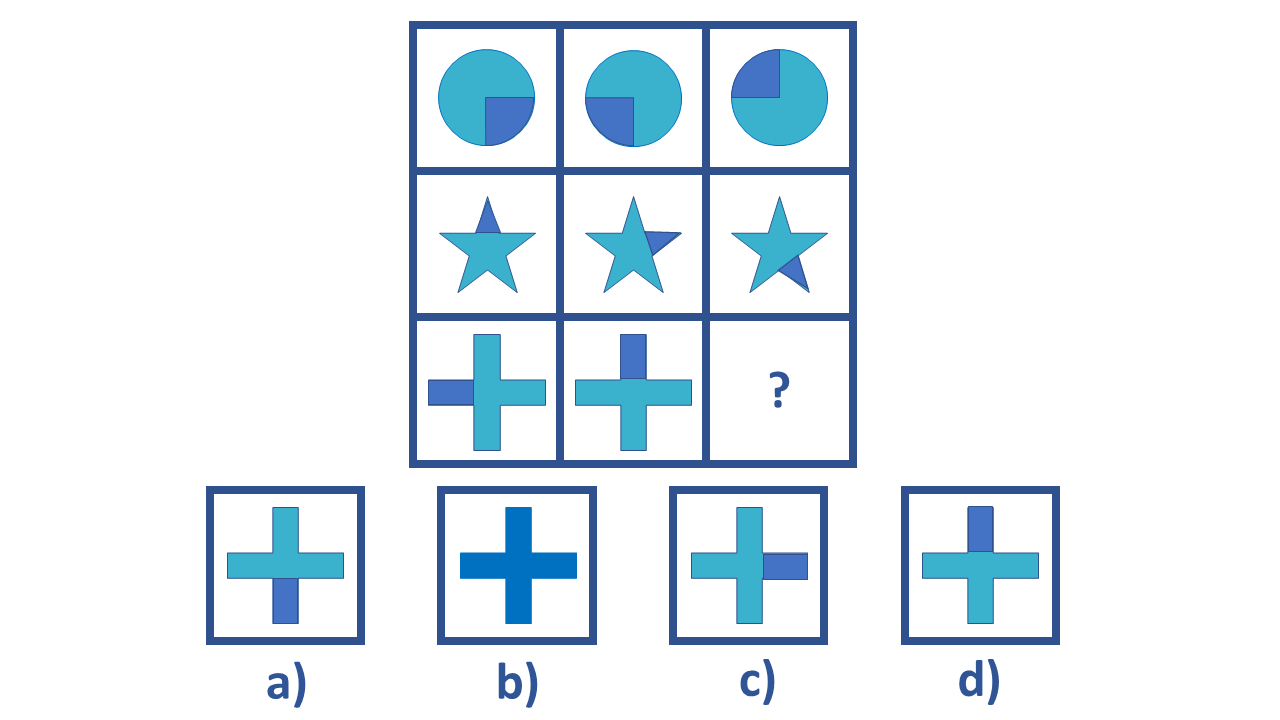
How Is the Korn Ferry Executive Assessment Scored?
Most of the Korn Ferry test answers (except Career Planning) are marked against a norm and presented as a percentile.
The norm groups your marks will be scored against might be a global standardized norm or a more customized, role-specific norm.
Each dimension of the Seven Signposts (and their relevant subdimensions) is presented in an individual report with an easy-to-understand color-coding system. Red is for scores of less than 10%; yellow represents scores of 11-50% and green for scores of more than 50%.
A good score on the KFALP will be represented by green across the board, but to earn green in each Signpost, you will need to score high enough (green) in most, if not all, of the relevant subdimensions.
In the individual report, a result for each subdimension is included, as well as information about how you can develop or be developed as an employee and a future leader.
Employers can also get a talent grid report, which compares the results of a specific segment of employees or candidates.
As this is an assessment of potential, it is not a pass/fail situation, merely an indicator of whether the candidate or employee has what it takes to be successful as a leader in the future.
A good score now indicates that this employee should be able to take on a leadership role later.
A poor score will give information to the employer about developmental and training needs to help grow the individual.
How to Pass the KFALP Test?
Step 1. Familiarise Yourself With the KFALP Format
One of the biggest challenges for candidates taking any psychometric assessment is unfamiliarity, and the KFALP is no exception.
Understanding the format of the assessment, what the questions will look like, and how you need to answer them will make you feel more confident and allow you more time to think about the Korn Ferry assessment answers and give your best.
Step 2. Understand Leadership Qualities
The KFALP is looking for specific qualities as part of the assessment, so understanding these will help you make the most of your answers.
Think about each question with the following Seven Signposts in mind:
- Drivers
- Experience
- Perspective
- Awareness
- Learning Agility
- Leadership Traits
- Capacity
- Derailment Risks
Step 3. Identify Your Own Career Goals
Knowing what you want to achieve in your career will help you answer the Career Planning questions, but it will also help you identify areas that you want to work on to be successful as a leader.
You will want to look at short- and long-term career planning as part of your build-up to the assessment.
Your persistence in achieving those goals will set you in good stead to demonstrate persistence as a leadership quality while helping you gain the experience and agility that you need too.
Step 4. Become Self-Aware
Knowing yourself is key to good leadership, and self-awareness is a key trait that the KFALP is looking for. With mindful awareness of your strengths as well as your weaknesses, you will know when to take control and when to take the advice of others.
Having fewer blind spots about your capabilities will reduce the risk of derailment, too, as you will not be as likely to micromanage or be closed off to the experiences and viewpoints of others.
Step 5. Practice Similar Questions Online
Practice makes perfect, and with the KFALP you can use practice time to not only hone your Korn Ferry assessment answers and your ideas but also get to know yourself a little better, too.
Practice questions get you used to working under exam conditions, and even though this test isn’t timed, it is a good idea to work quickly, so you are using your intuition to answer rather than overthinking (and therefore overcomplicating) the problems you need to solve.
Step 6. Give Yourself the Best Chance
Performance at any level needs practical preparation as much as theoretical, and for your mind to work to the fullest capacity, you need to ensure you are fueling it correctly.
In real terms, this means that you need to make sure that you are getting enough sleep in the lead-up to the assessment and that you are eating balanced and nutritious meals too. Don’t forget to drink either, as hydration is extremely important for mental performance.
Korn Ferry assessments are required in roles throughout most industries, although they are mostly found in technology and finance businesses.
If you are applying for a leadership role, you might be asked to complete the Korn Ferry Leadership Potential Assessment (KFALP), while some more entry-level roles might take a blended assessment that tests numerical, verbal and logical abilities.
The Korn Ferry battery of assessments are free for a candidate to take as part of a recruitment process or for promotion within a company; however, the business will pay to use the Korn Ferry Assessment systems and receive the personalized results.
The Korn Ferry assessments are designed to be challenging but not too difficult. With practice and a satisfactory level of competency, the aptitude assessments are more straightforward, while the Leadership assessment (KFALP) is a bit more difficult because it looks at the traits a future leader needs to have.
There are several tools available to help you pass the KFALP test. There is a technical guidance document on the Korn Ferry website, which goes into a lot of detail about the science behind the assessment.
For practice, there is a Prep Pack available on JobTestPrep that is designed specifically to give candidates all the training, tips, and practice questions that they need before facing the KFALP for the best chances of success.
The Korn Ferry Leadership Potential Assessment (KFALP) is not timed but according to the creators, it should take 35 to 40 minutes to complete, with an extra 40 minutes or so for the problem-solving Raven’s Progressive Matrices questions.
The Korn Ferry Leadership Potential Assessment (KFALP) is designed to look for future leaders, regardless of a candidate or employee’s current position.
It looks for traits that are found in successful leaders, and measures candidates against norms from either a global pool or a more local role-based pool of previous test-takers.
The KFALP is about potential ability rather than today’s ability.
You can prepare for the Korn Ferry Leadership Assessment (KFALP) using practice tests, articles like this, and specific Prep Packs from sites like JobTestPrep.
There is further help and advice about completing the KFALP and other Korn Ferry assessments on the Korn Ferry website.
The main topics covered in the KFALP are related to the traits, behaviors and abilities of successful leaders, which include:
- Drivers
- Experience
- Leadership traits
- Awareness
- Learning agility
- Capacity
- Derailment risks
To pass the Korn Ferry Leadership Potential Assessment (KFALP), you need to be able to answer a series of questions that are mostly based on work-related scenarios and situations.
The best way to success is to practice and to be familiar with what the test entails in terms of structure and content – and to answer using your intuition and gut feeling.
Whether you can retake the KFALP depends entirely on the company that you are taking it with.
Some places will assess regularly to get an idea of progress and development, while others will only use it when actively recruiting for a leadership position.
The KFALP is not a pass/fail test. It is used to demonstrate the future potential of a candidate, so ‘passing’ isn’t the end of the assessment.
Candidates who score highly throughout every section of the assessment can demonstrate the key competencies, traits, abilities and experience that are necessary for them to be good leaders in the future.
Final Thoughts
The Korn Ferry Leadership Potential Assessment (KFALP) is an assessment that is used to predict the future success of a candidate or employee in a leadership position by looking at the traits, competencies, experiences and drivers that have been demonstrated as being important through organizational psychology studies.
The assessment itself is untimed and needs to be completed on a computer. It is not a challenging assessment in terms of content or layout, but it requires careful thought when answering so that you can give the best demonstration of your leadership qualities.











